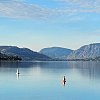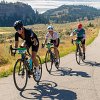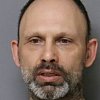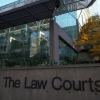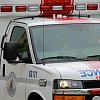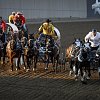Two hundred-plus Indigenous and non-Indigenous people, many in orange shirts, gathered in mid-town Penticton Saturday morning for the start of the 2023 “Walk for the Children,” the most prominent local observance on this year’s National Day for Truth and Reconciliation schedule.

A last-minute change of starting locations didn’t seem to negatively impact numbers.

In 2021 and 2022, the event began at the Penticton Peach and followed the waterfront then the Penticton Channel trail five kilometers to the Indian Residential School Monument on the PIB reservation. But this year it kicked off much closer to the Monument -- at the parking lot of the Penticton Safeway -- and followed busy city streets two kilometers to the finish.

Syilx Indian Residential school coordinator Taylor Carpenter explained the alterations.

“The walk,” she said, “is partially led by our Syilx Indian Residential School Committee, which is a committee of survivors and inter-generational survivors of the Nation. They’re the ones who tell us where they'd like us to start.

“And this year we decided to start here because we’ll be very visible. People will be able to see us in our orange shirts along these roads. It's more inclusive this year too (being shorter) so Elders and children and families can most likely do the whole walk together.”

At the start, amongst the sea of orange, PentictonNow had a chance to chat with local folks like Jacinta Ferrari, who said she took part to “show support.”

“I’m here because I really want to show support for all the positive things that are happening regarding Truth and Reconciliation,” she said. “It ties in so beautifully with a lot of what we need to do for the environment. They’ll show us the way. They know what needs to be done.”

Ferrari called the Walk a “symbol of change” and said she was “heartened” by the turnout.
Pentictonite Lori Goldman was up front.

“It’s good to be here in solidarity with our Indigenous neighbours,” she said. “We have a lot to work on when it comes to reconciliation, and certainly we need to work harder on reaching out and getting involvement instead of separation by a channel."
We asked Goldman if she felt the Walk should continue to be a fixture on the local Day for Truth and Reconciliation schedule.

“I think the Walk will be important forever so people can recognize all the harm that’s been done by colonization,” she said. “And certainly we live with it every day. Discrimination of jobs, discrimination by lack of inclusion, and lack of recognition of land rights.”

At approximately 10 AM, participants were treated to a powerful version of the Okanagan Song and then a few words from Penticton Indian Band chief Greg Gabriel, who spoke of the importance of the day and expressed his happiness over the large turnout.

Led by an RCMP cruiser and assisted by more cruisers at key intersections, the walk began at 10:15 and made its way along Duncan to Fairview and eventually across Hwy 97 to PIB land.

One of the day’s most revered participants was Herman Edward of the Lower Similkameen Indian Band, a man who maintains a high profile in and out of his community decades after his own personal experiences in the Indian Residential School system.

“Back in my day, we didn’t have a bus going down to the Lower Similkameen. So they sent me to St. Eugene's residential school in St. Mary’s Mission Reserve in Cranbrook,” he told us as we walked.
“And I don’t ever wish anyone to ever go to one of those places. It was terrible. We were starved, we weren't protected. I cried myself to sleep every night for the first while.”

According to Edward, the school pulled in “kids from all over.”
“We had kids from the Shuswap, from Tobacco Plains, Grasmere, Creston, Oliver, Penticton, Vernon. Maybe as far north as Williams Lake. But it didn’t matter. The more times you ran away, they’d take you further away from home.”

Edward recounted that there “wasn’t a day when we weren’t swatted” and specifically remembers being punished with a “three-inch wide strap” on bare skin, at the age of six.
“Our teachers were nuns,” he said. “We didn’t have regular teachers. And these nuns weren't exactly angels.

“It was like an army camp. We had to march. We marched every day. And we prayed all the time. So many ‘Hail Marys’, so many ‘Our fathers.’”
But Edward counts himself as “fortunate” for still knowing his language and his culture.

“It's easier now to talk about this,” he said. “When I first started, it was painful. I found even the public school (he attended after) wasn’t much better because there was a lot of discrimination there too, a lot of racism. Even amongst brown people because they didn’t want to lose their white friends.”

“But today I’m a teacher for my people. I’m one of the Language Speakers, one of the Cultural Knowledge Keepers.”
And he still prays today. But, he added, “in my own culture.”

“And the reason I do that is because I’m not afraid my god is going to burn me in hell.”

Once at the Monument, the crowd had a chance to listen to a variety of survivors, Elders, and leaders. Like Herman Edward. And Grand Chief Stewart Philip and wife Joan Philip, NDP MLA for Vancouver-Mount Pleasant.

And Hazel Squakin, who didn’t hold back.

She reiterated, vigorously, that her people were free before the settlers arrived.

She reminded everyone in attendance that the Okanagan land remains unceded. She made valid points, and did so with some exasperation.

“I bleed red just as you do,” she said. “My colouring is different. I'm 90 years old. And I’m proud to be an Indian. Can you say the same for your nation?”

PIB Elder and survivor Jack Kruger struck a more conciliatory tone, and in so doing kept true to the position he held during last year’s Walk and the first Walk in 2021.

And in the mixed crowd, there was applause, there were shouts, there were tears, there was laughter when appropriate, and there were the pained reactions of those who couldn't fathom all they were hearing.

Reconciliation, it has been said, is a long and difficult journey.

Saturday those steps continued.










